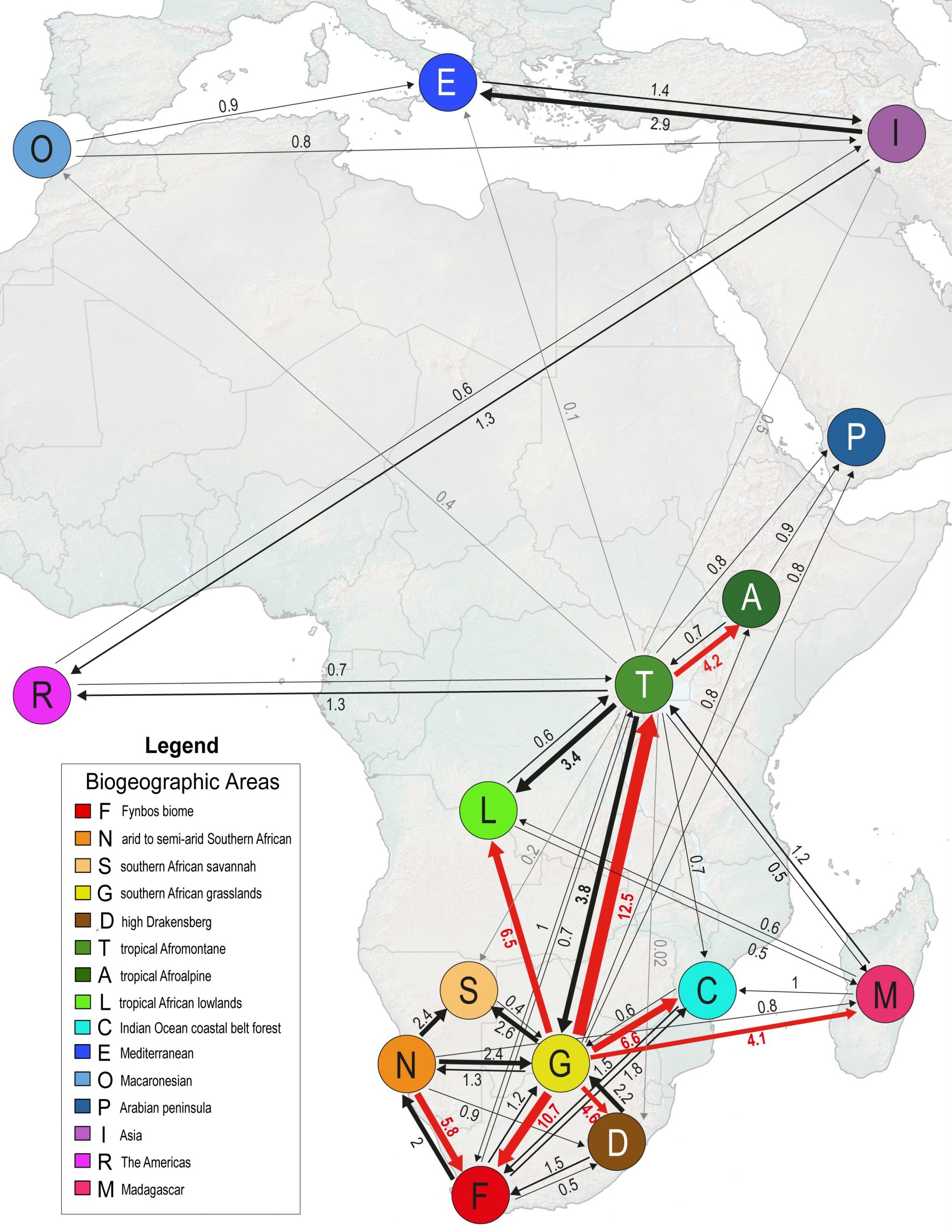To the north and up: South African meadows nourish the colonization of the «sky islands» of tropical Africa
- A new study analizes the evolution of the plants of the mountain tops of tropical Africa.
- The afroalpine species of the Helichrysum genus would have originated from neighbouring ancesters that already occupied areas in high elevation.

Recently, members of the research group leading the AFROMONT project have published an article entitled: Repeatedly northwards and upwards: South African grasslands nurture the colonisation of the so-called “sky islands” of tropical Africa in the genus Helichrysum(Compositae).
This work has been possible thanks to the international collaboration of researchers from numerous institutions coordinated by the Unit of Systematics and Evolution of Vascular Plants of the Barcelona Autonomous University (UAB), associated to the CSIC through the Botanical Institute of Barcelona. Together they have joined forces to contribute to the knowledge of the evolution of the flora of a unique biogeographic region, through a remarkable global sampling of one of its most iconic genera.

In the African continent the main centres of biodiversity are the Afromontane region and the Afroalpine region, which contrast with the rest of the more arid and warm habitats of the continent by the fact that they offer humid and temperate spaces in the highest parts of the mountains. These regions, scattered mainly around the East African rift, such as Mount Kilimanjaro in Tanzania or Mount Kenya in Kenya, as well as being very diverse, are rich in endemic plants, i.e. species that are unique to a particular geographical area. However, the evolutionary processes that have led to this extraordinary diversity are as yet poorly understood.
To contribute to a better understanding of the origin and evolution of the flora of these habitats, the genus Helichrysum (Compositae), one of the most species-rich genera in these mountains, has been studied. Furthermore, the example of Helichrysum which has South African origins and has migrated northwards, contrasts with the other studies on the Eurasian origin of Afroalpine flora, which show a southward dispersal from the temperate zones of the northern hemisphere.
For this purpose, DNA sequence-based analyses were carried out to establish the kinship relationships between species, followed by dating and biogeographical analyses to place the origin of the different lineages in time and space, in order to see the direction of migrations throughout their distribution. First, sequences of approximately 1000 nuclear genes for about 300 species (50% of the genus) were generated using the next-generation sequencing technique called “target-enrichment“. With this data, a pair of trees were constructed using two different methodological approaches (concatenation and coalescence), which gave very similar and statistically supported results. The reconstruction of the biogeographical history supports the South African origin of Helichrysum, and suggests the grassland region of the Drakensberg Mountains – which is part of the Afromontane archipelago – as a centre of diversification and the main source of lineages from tropical Africa, colonised several times during the Miocene and Pleistocene, and from outside the African group. In fact, different lineages would have colonised the Mediterranean, Asia, America and Madagascar from various regions of the African continent.

One of the most interesting results is that the species living only in the highest parts, the Afroalpine ones, would have originated from neighbouring ancestors, which already occupied the higher parts of the same mountains, and not from ancestors from temperate Eurasian areas as is the most common and known pattern so far. The origin of these species would have coincided with the periods of formation of these volcanic mountains and with the onset of glacial cycles. Thus, the combination of these phenomena would have created the conditions for the emergence of new species and would have allowed gene flow between mountains, increasing connectivity between temperate regions and creating new habitats. In short, contributing to the diversity and evolution of the flora of these regions known as the “sky islands” of tropical Africa.
Collaborating institutions involved in the work: Department of Botany, University of Salamanca, Spain; Department of Biological Sciences, University of Memphis, EE. UU.; Natural History Museum, University of Oslo, Norway; University of the Witwatersrand, Suráfrica; South African National Biodiversity Institute, South Africa; Department of Plant Biology and Biodiversity Management, Addis Ababa University, Ethiopia; Department of Botany, Charles University in Prague, Czech Republic; Institute of Botany, Academy of Sciences of the Czech Republic; Meise Botanic Garden, Belgium; Herbier du Parc Botanique et Zoologique de Tsimbazaza (PBZT), Madagascar; Department of Botany, Swedish Museum of Natural History, Sweden.
Reference article:
Blanco-Gavaldà, C.; Galbany-Casals, M.; Susanna, A.; Andrés-Sánchez, S.; Bayer, R.J.; Brochmann, C.; Cron, G.V.; Bergh, N.G.; Garcia-Jacas, N.; Gizaw, A.; et al. Repeatedly Northwards and Upwards: Southern African Grasslands Fuel the Colonization of the African Sky Islands in Helichrysum (Compositae). Plants 2023, 12, 2213. Doi: 10.3390/plants12112213
Text: Carme Blanco














